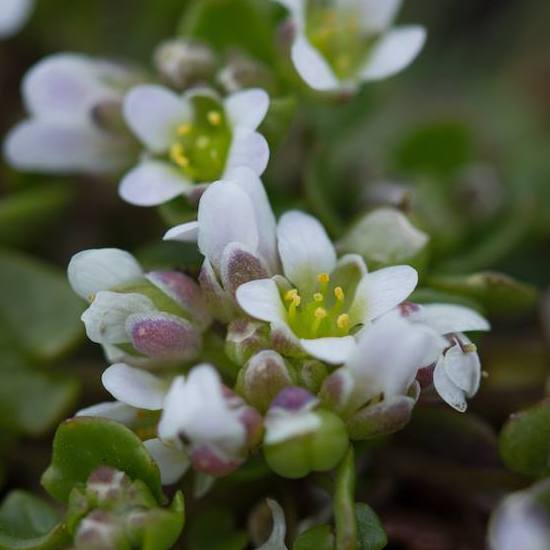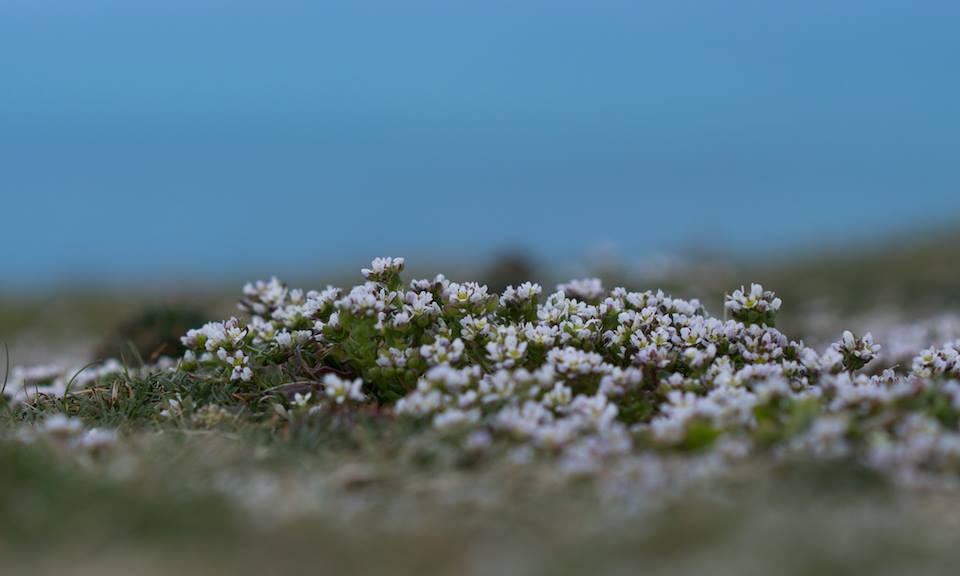
From May to August, Common Scurvygrass can be found along the clifftops of The Lizard.
Photo: Amanda Scott
Scientific name: Cochlearia officinalis
Other common names: Spoonwort
What to look for:
- Family: Brassicaceae (Cabbage family)
- Flowers: White (occasionally lilac) flowers, 8 to 10 mm across
- Leaves and stem: Basal rosette of long-stemmed, heart-shaped leaves; one or more stems
- Height: 5 to 50 cm
- Where: Cliffs, salt marshes and dunes, and on tidal rivers inland
- When: Flowers May to August
- Habit: Upright
The coastal path of The Lizard is swathed with white in the summer months. This is Scurvygrass, often found in association with its close cousin Danish (or Early) Scurvygrass (C. danica). Both are native to Britain, and can tolerate high levels of salt and salt spray, whether on the coastal cliff-edge or on roadside verges of the A30, where the Council salt-grits the road in times of frost and snow. Scurvygrass is one of those plants that has taken advantage of new niche habitats and has literally ‘taken to the roads’.
The biggest claim to fame of Scurvygrass is its past medicinal use in the treatment of scurvy. Sailors on long voyages used to suffer from this disease, caused by a lack of Vitamin C. Scurvygrass leaves are packed with Vitamin C, and were made into a concentrated solution for seafarers to help protect them. Captain Cook was a big supporter of its efficacy.
Did you know…?
…The Befuddlement Draught made at Hogwart’s School of Witchcraft and Wizardry in the Harry Potter books was concocted from Scurvygrass, Lovage and Sneezewort.

More information and references:
Rose, F. and O’Reilly, C., 2006. The Wild Flower Key, 2nd edition. Frederick Warne, London.
Stace, C., 2010. New Flora of the British Isles, 3rd edition. Cambridge University Press, Cambridge.
Published: April 2020
Author: Adapted from an article originally written by Pat Sargeant
Photos: Amanda Scott
